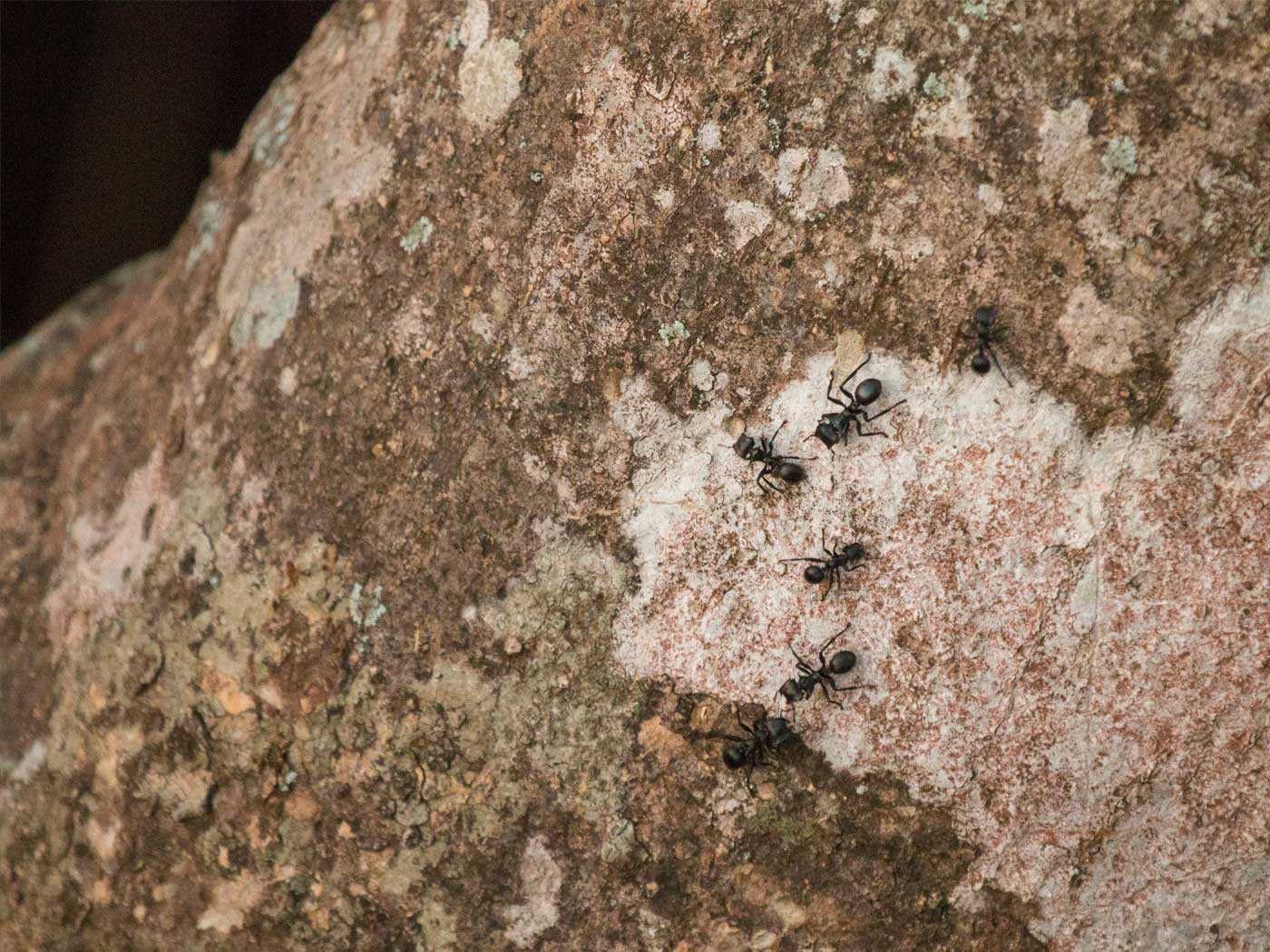A recent study on a plant in the mustard family (Brassica Rapa) provides evidence that plants continuously track environmental changes both in real time and across generations. Brassica Rapa utilize regulated innate mechanisms to produce “rapid” and highly tailored responses to the presence of pollinating bees, leaf-eating caterpillars, and the combined activities of both simultaneously.1
Plants continuously track environmental changes both in real time and across generations. ![]()
Botanists at the University of Zurich conducted a controlled greenhouse experiment on these field mustards over a two year period. Brassica Rapa is a fast-cycling plant. Over six generations, four groups of plants were each exposed to one of the following four conditions: bee pollination only, bee pollination and caterpillars, hand pollination without caterpillars, and hand pollination with caterpillars.
A press release from the University of Zurich sums up the highly targeted responses of Brassica Rapa from the first to the sixth generation,
The plants pollinated by bumblebees without herbivory [caterpillars eating the plants] were most attractive to the pollinators: they evolved more fragrant flowers, which tended to be larger. ‘These plants had adapted to the bees’ preferences during the experiment,’ explains Sergio Ramos [a co-researcher]. By contrast, bee-pollinated plants with herbivory were less attractive [to the bees], with higher concentrations of defensive toxic metabolites and less fragrant flowers that tended to be smaller. ‘The caterpillars compromise the evolution of attractive flowers, as plants assign more resources to defense,’ says Ramos.2
Plant behaviors and even structural changes were also observed to happen rapidly across generations. Plants exposed to bee pollinators and caterpillars tended toward significantly higher self-pollination and they quickly expressed reduced spatial separation of sexual organs.1 The key question is, how did all of these significant changes happen so fast?
The researchers frame their explanation within a selectionist worldview. Selectionism sees organisms as passive, like modeling clay, where the environment exercises agency to mold their traits.3 Random uncertainties in nature are seen as somehow driving passive organisms through time, which evolutionists believe leads to the diversity of life on Earth. Accordingly, these botanists don’t look to mechanisms within Brassica Rapa but to the plant’s environment as the causative agent. They claim that “rapid plant evolution [is] driven by” bees and caterpillars. The University press release echoes this theme, “In nature, plants interact with a whole range of organisms, driving the evolution of their specific characteristics.”2 These researchers believe that these plants’ specific characteristics are due to their exposures: “We found that plants [were] under selection by bee pollinators…and herbivores.” They even titled their paper, “Rapid plant evolution driven by the interaction of pollination and herbivory.”1 Another report accompanying their research in the same issue of Science asserts, “These traits have been related to selective pressures imposed by pollinators.”4
But are selectionists justified in asserting that environments drive adaptation, plants are “under selection by” bees, and “selection pressures impose”? These assertions amount to nothing more that non-scientific personifications of nature that selectionists envision are carrying out these mystical actions. Selectionists face a difficult challenge making these claims more than personifications since they would need to observe nature making a selection, the researchers would have to quantify a selection pressure, and unambiguously identify the “unit of selection.”
Rapid, targeted, and likely repeatable responses are inconsistent with the tenets of evolutionary theory that claim adaptations must be gradual and undirected. These researchers didn’t document any struggle for survival between these plants, so their claim that these adaptations are somehow “evolution” is contradictory. But, could there be a more precise framework to reinterpret these experimental observations that expects rapid and targeted responses, includes every system element, and omits unobserved mystical steps? Could the rapid response of these plants to different exposures be evidence for a key element in an adaptive system enabling highly tailored self-adjustments?
ICR is developing a theory of innate biological design as a more scientific approach and explanation than selectionism. One major assumption is that biological functions are suitably explained by engineering principles. Focusing on the biological function of adaptability, ICR’s model—continuous environmental tracking (CET)—hypothesizes that if human engineers would design, build, and use a tracking system to detect and maintain surveillance of a moving target, then creatures may use a similar strategy to track changing conditions.5 This model predicts that creatures will use the same well-matched elements underlying the self-adjustable properties of tracking systems which are: (1) input “sensors”; (2) programmed logic mechanisms to regulate an internal selection of specific adaptable responses; and (3) output “actuators” to execute responses.
Discoveries show that biological control systems throughout the plant and animal kingdoms are innately rooted in logic mechanisms that correspond closely to human logic.6 Biological systems usually operate like computer programs where rules define different combinations of on-off settings as commands or conditional statements like “if,” “then,” “and,” “or,” and “not.” Clearly the plants have sensors to specifically detect bees and caterpillars, and there is some type of mechanism to distinguish between them. The responses also point to internal logic mechanisms functioning like: if (+) bee, then produce fragrant flowers; if (+) caterpillar, then produce toxic metabolites; and if (+) bees and caterpillars, then produce a graded response of smaller flowers and toxic metabolites. It seems there are pre-programmed actions within Brassica Rapa that existed prior to the exposure to bees or caterpillars, and that their existence is not due to the exposure. The plant appears to be literally ready and waiting for the various exposures and it rapidly reacts accordingly with a specific preplanned response. The fact the responses appear predictable points to this conclusion.
Scientifically, CET is a preferable explanation to selectionism. Why? Well, CET adopts the simplest assumptions, omits mystical “selection events” and non-quantified “selection pressures,” and is the simplest scientific explanation that fits the evidence. The explanations provided by the authors of this study are yet another example of equating an organism’s designed innate self-adjustments with “evolution.”
References
1. Ramos, S. E. and F. P. Schiestl. 2019. Rapid plant evolution driven by the interaction of pollination and herbivory. Science. 364(6436): 193-196. DOI: 10.1126/science.aav6962
2. Anonymous. Interplay of Pollinators and Pests Influences Plant Evolution. Posted at media.uzh on April 11, 2019 accessed April 17, 2019.
3. Guliuzza, R. 2017. Engineered Adaptability: Adaptability Via Nature or Design:? What Evolutionists Say. Acts & Facts. 46 (9):17-19.
4. Agren, J. 2019. Pollinators, herbivores, and the evolution of floral traits. Science. 364(6436): 122-123. DOI: 10.1126/science.aax1656
5. Guliuzza, R. J. 2018. Engineered Adaptability: Adaptive Changes Are Purposeful, Not Random. Acts & Facts. 47 (6): 17-19.
6. Guliuzza, R. J. 2018. Engineered Adaptability: Logic Mechanisms Direct Creatures' Innate Adaptability. Acts & Facts. 47 (11): 17-18.
*Randy Guliuzza is ICR’s National Representative. He earned his Doctor of Medicine from the University of Minnesota, his Master of Public Health from Harvard University, and served in the U.S. Air Force as 28th Bomb Wing Flight Surgeon and Chief of Aerospace Medicine. Dr. Guliuzza is also a registered Professional Engineer.























